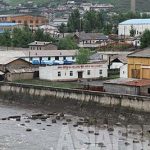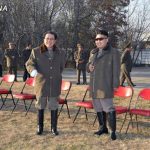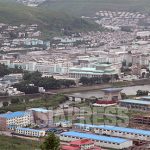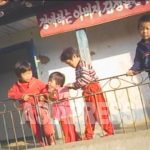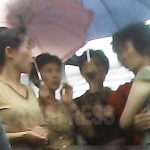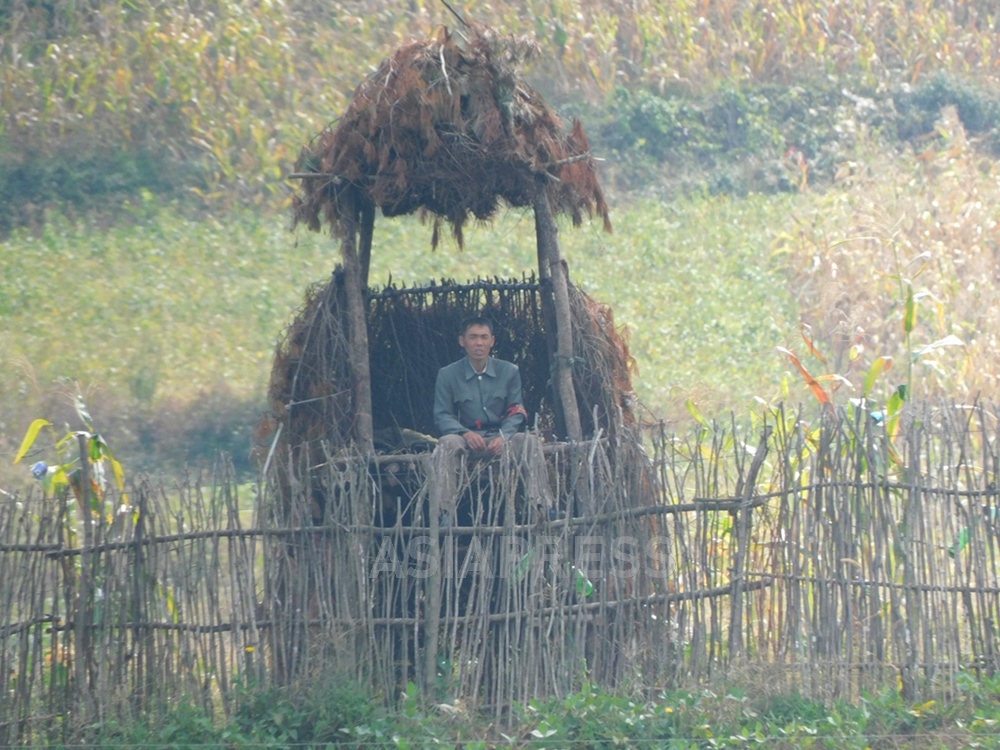
Using a reporting partner inside the country, ASIAPRESS conducted a survey of a collective farm in North Hamgyung Province in late September. Farms were at the height of the harvest of the country’s main crop, corn, at the time, so farming communities were highly alert to preventing their crops from being stolen. During the same period, a Chinese reporting partner took photos of a farm in North Pyongan Province near the Yalu River. The third installment in this series examines the efforts made by farms to prevent the theft of crops. (KANG Ji-won / ISHIMARU Jiro)
Reporting partner “A,” who lives in North Hamgyung Province, conducted a survey at Collective Farm “B,” which has around 500 farmers. The farm cultivates corn, one of North Korea’s main staples. The farm is slightly smaller than average farms in North Hamgyung Province but is typical of the northern region of the North Korea, which has lots of mountains and few places to farm. A Chinese reporting partner took photos in late September. He took a ferry along the Yalu River and took photos of a farm in Sakju County, North Pyongan Province.
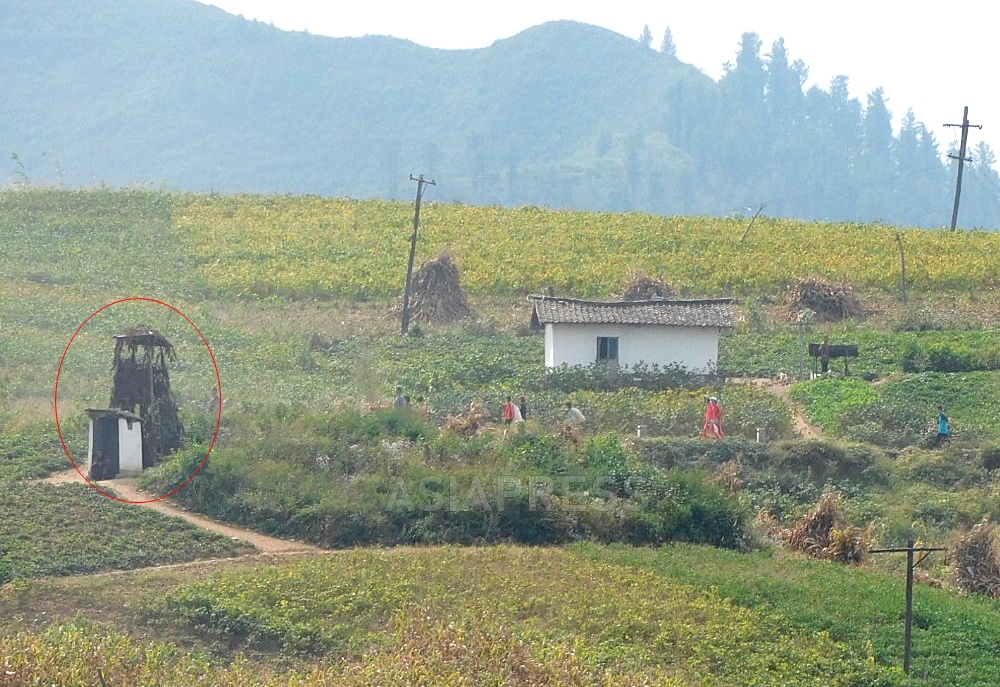
◆ Farms strictly prohibit outflow of grains
The following is an interview with “A,” who conducted the survey of Collective Farm “B.”
―― Is there a lot of stealing of crops this year, just like in past years?
Starting a few years ago, thieves from cities have streamed into farming areas every harvest season. This year, the crackdowns on crop stealing have been so fierce that it has been hard for thieves to move around the roads, so they just try to eat their fill in the farming areas instead. They pretend to be picking medicinal plants or mountain greens, while all the while stealing crops from collective farms or private plots to cook up and eat in the nearby mountains. A unit that monitors the forests has selected farmers who have served in the military to strengthen security around farm fields that can be accessed from nearby mountains. The unit is deployed whenever smoke rising from the mountains can be seen.
―― We’ve heard it’s hard to bring crops back to the cities.
Sentry points carefully watch for crops being taken out of farming areas, so there’s a lot of farmers who steam or boil corn to sell into markets. They cook the corn up because cooked corn is considered a “processed food,” not a harvested crop from the farm fields. Farmers have sold a lot of unripe corn from their own private plots to the markets to quicky earn a lot of money.
―― Are the authorities cracking down on crops turned into processed foods produced on private plots?
Farmers report to the farming management committees or police stations that the crops were produced on their own private plots or gardens to avoid getting in trouble. People who have moved quickly to sell their crops have earned a bit of money, but there are also those who have failed to sell anything because they didn’t get permission from local police.
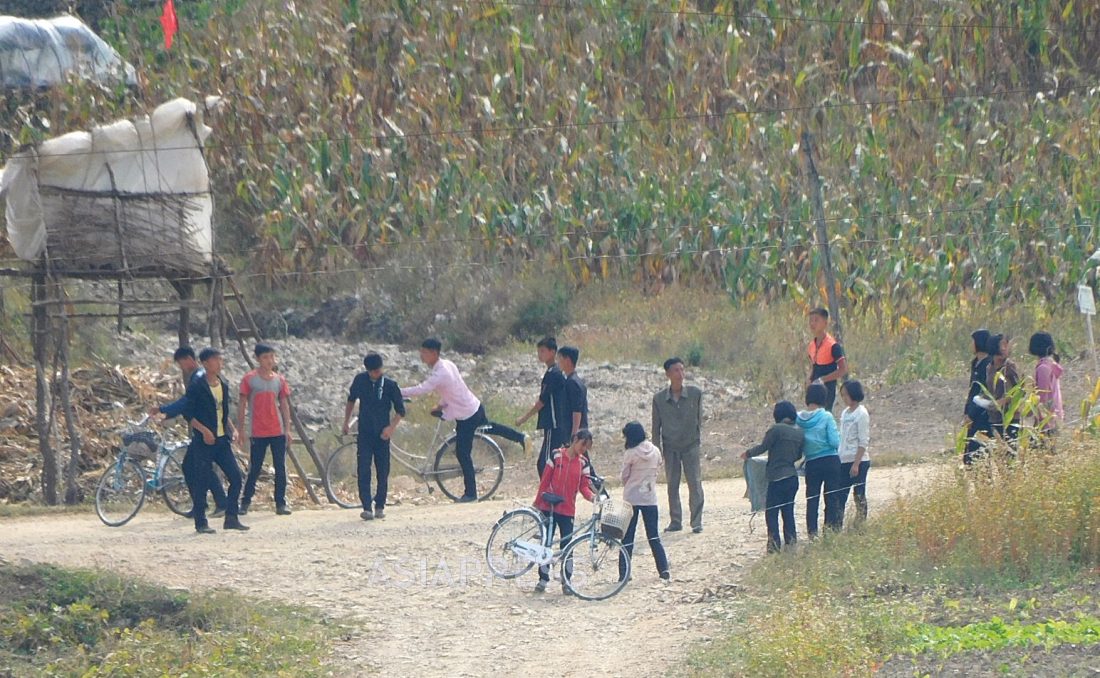
◆ The government buys up crops at cheap prices
Of course, the farmers need cash. They need to buy daily necessities such as clothes, shoes, soap, cookware, and school supplies. That’s why they have long sold the distributions of food they get from collective farms after the fall harvest or the crops they cultivated in their own private plots to earn money.
―― How are farming communities earning cash?
Farmers suffer from a severe lack of cash. The government is allowing them to buy daily necessities through bartering at collective farm shops; in short, they are using food they have as cash to buy items they need. Farmers who need cash, meanwhile, can have their crops bought up by the government. This year’s government-set price for the purchase of one kilogram of corn is 2,500 won.
※ ASIAPRESS was unable to confirm whether the government-set price was the same in other areas of the country. The market price for one kilogram of corn is 3,000 – 3,400 won, very cheap by North Korean standards. 660 North Korean won is equal to around 100 South Korean won.
In an unusual move, Collective Farm “B” is allowing farmers to exchange corn with white rice this fall. The rice is imported from China by a trading company, but the farm is exchanging 2.5 kilograms of corn for one kilogram of rice.
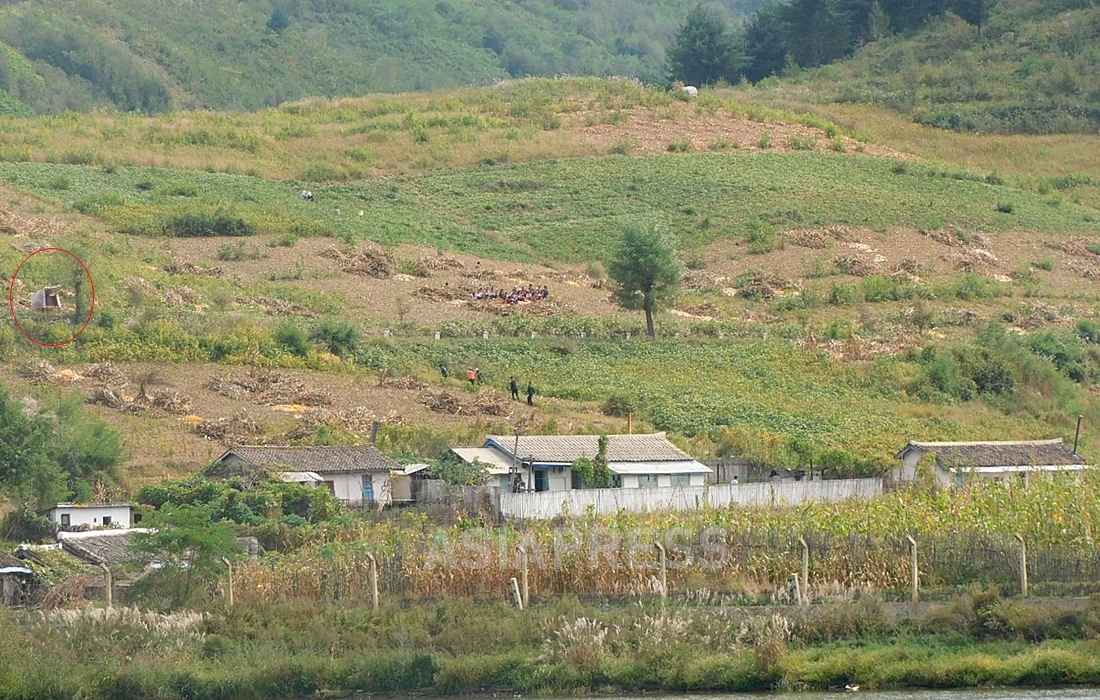
―― Are farmers selling food to market sellers?
Farmers urgently need cash, and many are demanding market sellers give them cash in advance of the harvest and then add interest once they provide the crops to the market sellers. Recently, this kind of business transaction has been designated as “anti-socialist behavior” by the government and is being severely cracked down on. Currently, the government doesn’t recognize the sale of food between private citizens as legal transactions. This year, the government even informed farmers that their entire stock of food could be confiscated if they violate the law.
―― Are cadres engaging in any corruption?
Cadres who use their authority to bring out crops from farming areas for private use can get in trouble with the authorities. However, collective farms need cash to purchase materials and run their organizations, which has led many farms to sell their crops to market sellers. This is now being cracked down on by the police and prosecutors’ offices with a vengeance. (To 4 >>)
All photos were taken on the Chinese side of the border across from Sakju County, North Pyongan Province, in late September 2023.
※ ASIAPRESS communicates with its reporting partners through Chinese cell phones smuggled into North Korea
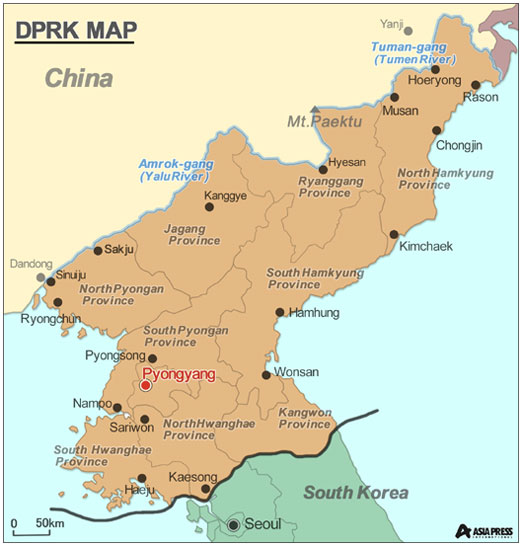
- <Inside N. Korea> A recent report on conditions at farms (7) Many people mobilized to harvest this year’s good yield of potatoes… But, “several tons of potatoes are going rotten in a storage facility each day”
- <Inside N. Korea > A recent report on conditions at farms (6) Major investigation underway after end of harvest to uncover corruption by cadres…Unfair punishment causes uproar on one farm
- <Inside N. Korea> A recent report on conditions at farms (5) Telescopic lens captures conditions in farming communities – 2 The highly-fortified border is akin to a disputed zone…why? (10 photos)
- <Inside N. Korea> A recent report on conditions at farms (4) Telescopic lens shows the present conditions in North Korea’s farming communities -1 Photographs show people mobilized for farming (5 recent photos)
- <Inside N. Korea> A recent report on conditions at farms (2) The military is given priority over harvested crops because “there are many soldiers suffering from malnutrition”…In a rare move, the military takes crops directly from fields (3 recent photos)
- <Inside N. Korea> A recent report on conditions at farms (1) The harvest is better than last year, but lack of materials remains a serious problem (4 recent photos)
